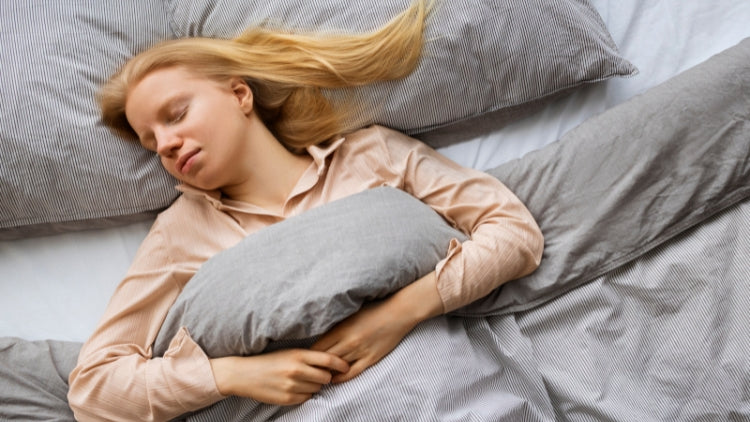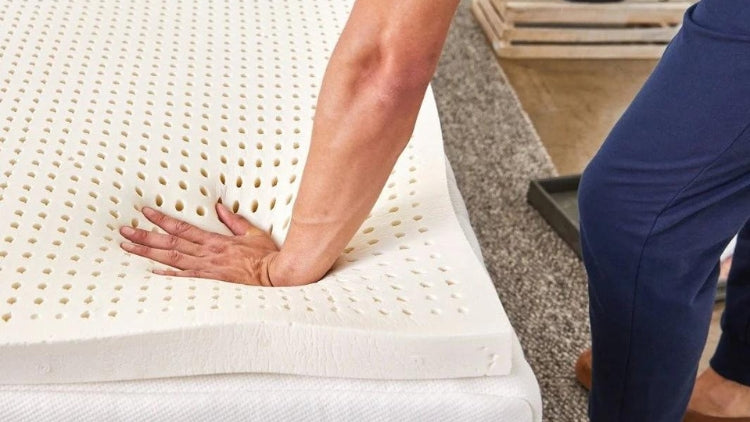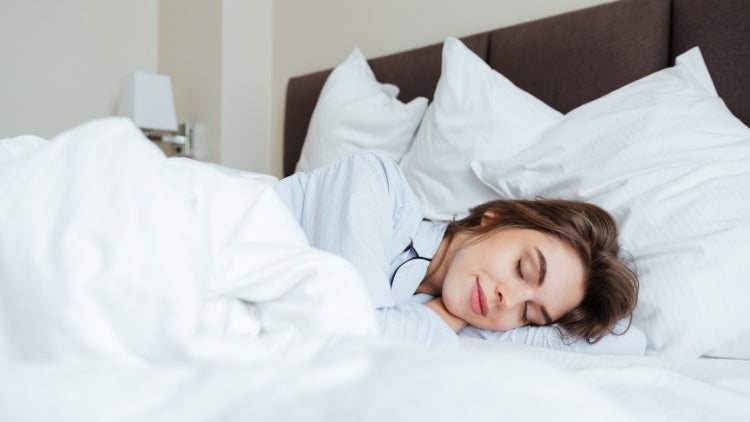Many people struggle with finding the perfect sleep position. For back sleepers, finding the right balance between comfort and support is critical. According to a study, approximately 8% of people are back sleepers, enjoying this position's various advantages.
Understanding how to optimize your sleeping habits as a back sleeper can significantly improve your sleep quality. When done correctly, back sleeping can provide numerous health benefits, including proper spinal alignment, reduced risk of wrinkles and acne, and relief from certain types of pain.
This guide will explore the benefits of back sleeping, potential drawbacks, and tips for maximizing comfort and health benefits.
Benefits of Back Sleeping
Back sleeping is often considered optimal for its numerous health benefits. This section will examine these benefits in detail, helping you understand why back sleeping might be your best choice.
Spinal Alignment

Sleeping on your back promotes natural spinal alignment. This position helps to spread your body weight evenly, relieving pressure on your spine and neck, which can help prevent and alleviate back pain.
Prevents Wrinkles and Acne
Back sleeping minimizes face-to-pillow contact, reducing skin friction. By keeping your face off dirty pillowcases, you can help prevent wrinkles and acne.
Reduces Acid Reflux
Sleeping on your back allows gravity to keep stomach acid in place, lowering the risk of acid reflux. Elevating your upper body slightly can further enhance this benefit.
Relieves Hip and Knee Pain
Back sleeping helps distribute your body weight evenly, relieving pressure from your hips and knees. If you have joint pain, this can be pretty helpful.
Drawbacks of Back Sleeping
While back sleeping has numerous benefits, it's not without its drawbacks. Understanding these potential issues is crucial for addressing and reducing them effectively.
Snoring and Sleep Apnea
Back sleeping can cause your tongue to fall back into your throat, obstructing your airway and increasing the likelihood of sleep apnea and snoring. Using an adjustable bed frame to raise your head can alleviate this problem.
Lower Back Pain
For some, back sleeping can exacerbate lower back pain. Placing a pillow under your knees can help keep the natural curve of your spine and alleviate discomfort.
Unsuitable for Pregnancy
Pregnant individuals are often advised to avoid back sleeping as it may impede blood flow. Side sleeping, particularly on the left side, is typically recommended instead.
Tips for Optimizing Back Sleeping
Maximizing the benefits of back sleeping requires adjusting your sleep setup and habits. Making a few key changes can enhance your comfort, support your spine, and improve your overall sleep quality.
Whether choosing the right pillow or selecting a suitable mattress, these tips will help you get the most out of back sleeping. In this section, we'll provide practical advice to help you optimize your sleeping position and enjoy a restful night's sleep.
Proper Pillow Use

Use a medium-loft pillow that supports the natural curve of your neck. Cervical or orthopedic pillows can provide additional support and enhance comfort.
Mattress Selection
Choosing the right mattress for back pain is crucial. A firmer mattress supports your body and helps maintain proper spinal alignment. Hybrid mattresses, which combine foam and innerspring, offer a balance of comfort and support.
Body Positioning
Keeping a pillow beneath your knees preserves the spine's natural curve, relieving discomfort. Elevating your upper body with an adjustable bed frame can reduce acid reflux and improve breathing.
Training to Sleep on Your Back
If you're not naturally a back sleeper, try starting the night on your back. Use body pillows to prevent rolling over. Consistency is critical to training your body to adopt this sleep position.
Choosing the Right Bedding
For back sleepers, selecting a supportive mattress and appropriate pillows is essential. Consider our range of mattresses designed for back pain and explore adjustable bed frames that can enhance your sleeping experience.
Elevate Your Sleep Quality with Our Products
Back sleeping offers numerous benefits, from improved spinal alignment to reduced pressure points. Optimize your back sleeping with these tips, and enjoy a more restful sleep each night.
Visit Blissful Nights to explore our range of products designed to support your sleep needs, including mattresses for back pain and adjustable bed frames.
FAQs
What type of mattress is best for back sleepers?
A firmer mattress is generally best for back sleepers. It maintains spinal alignment with adequate support. Additionally, hybrid mattresses balance support and comfort well.
How can I prevent snoring while sleeping on my back?
Elevating your head using an adjustable bed frame or extra pillows can help keep your airway open, reducing the likelihood of snoring.
Is back sleeping recommended during pregnancy?
No, as it can restrict blood flow. Side sleeping, particularly on the left side, is usually advised.
What kind of pillow should back sleepers use?
Back sleepers should use a medium-loft pillow that supports the neck's natural curve. Cervical or orthopedic pillows can also provide excellent support.
How do I train myself to sleep on my back?
Start by falling asleep on your back each night. Use body pillows to prevent rolling over and remain consistent to help your body adjust to this position.





Leave a comment
This site is protected by reCAPTCHA and the Google Privacy Policy and Terms of Service apply.